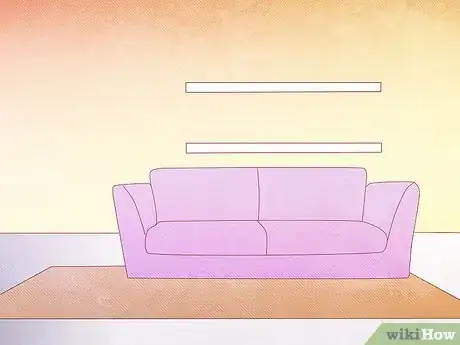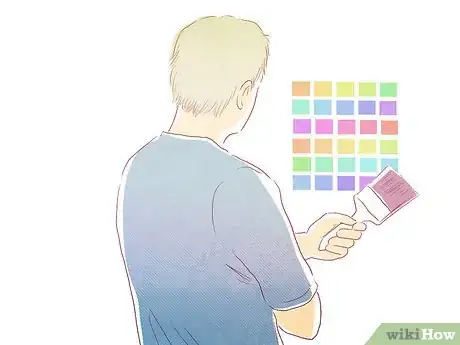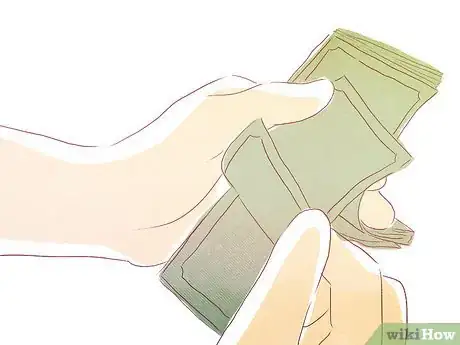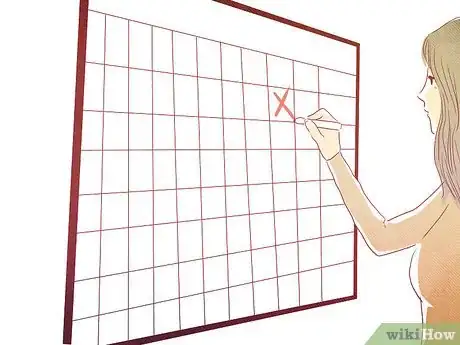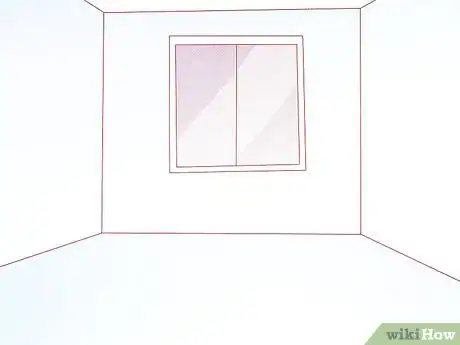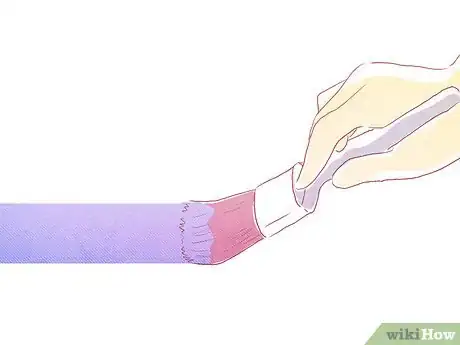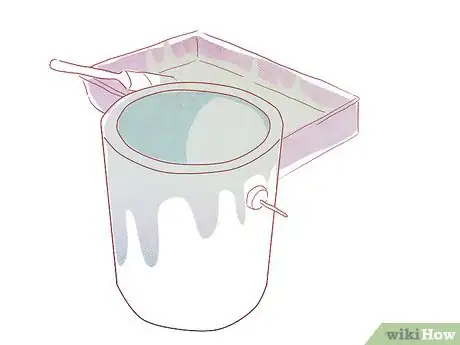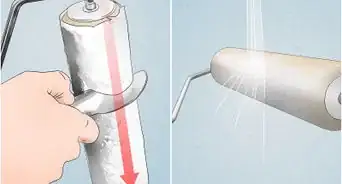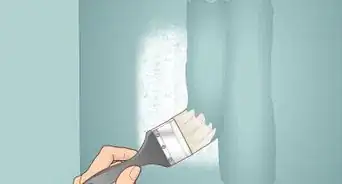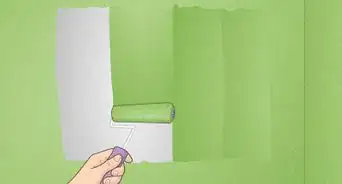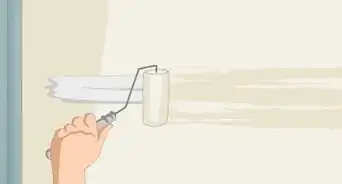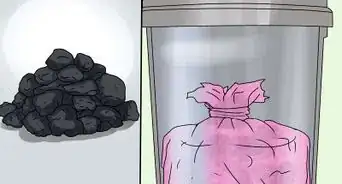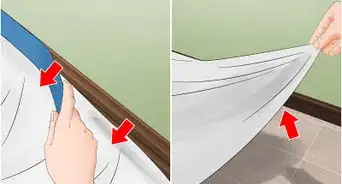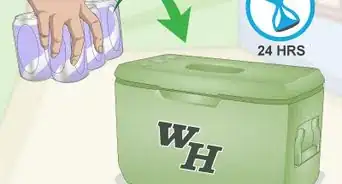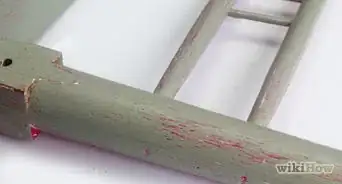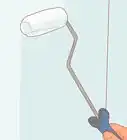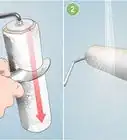This article was co-authored by Jeff Baldwin. Jeff Baldwin is a Residential Painter and the Owner of Baldwin Custom Painting. With two decades of painting experience, Jeff specializes in high-end residential and small commercial painting projects. Dedicated to quality craftsmanship, Jeff and Baldwin Custom Painting provide bonded/insured, licensed, and lead-safe certified services in residential painting, light commercial painting, and wood refinishing.
This article has been viewed 460,679 times.
Painting the entire interior of a house can transform it from mundane to inspiring! It can also raise property value and help a home sell more quickly. Painting requires serious planning, but the finishing result is worth it!
Steps
-
1Develop a vision. As you tour the house, write down your thoughts on color, keeping sunlight, windows, gloss and trim in mind.
- Light colors work anywhere, but dark colors require rooms with lots of windows and natural light. Painting a basement den a deep blue might sound relaxing but can turn the room into a dungeon!
- If you're preparing a house for sale, stay with neutral colors that could match any decoration or furniture.
- If you're e-savvy, take digital photographs of the rooms in question and adjust the colors with your favorite photo editing program. This will ensure you and everyone involved know exactly what the room will look like.
- If you're transforming your home for yourself, live a little. Go nuts. Like a color? Be bold. If you don't like it, guess what? You can paint it again. Feeling artistic? Plan a mural. It's your place. The only person who has to like it is you (and the people who live with you!).
- Complementary colors work well when adjacent rooms open to each other (try two shades of the same color for a neat effect). You can go for bold contrast when crossing a barrier (like a door).
- Carefully consider the gloss level. The shiny gloss paints are easy to clean, but will make any wall blemish stand out. The flat paints will help disguise wall blemishes, but can be difficult to clean. Generally, you'll want glossier paints where there's lots of steam or cooking (baths and kitchens) and in high-traffic areas. Flatter paints are preferred for large walls and ceilings.
- Consult a professional home decorator to guide you.
-
2Come to an agreement. There are probably others in your life who have a vested interest in your home. Get their consensus.Advertisement
-
3Make a very educated guess. Estimate the area you'll need to cover. Measure the height and width of each wall. In the U.S., coverage estimates are given in square feet, everywhere else on the planet uses the metric system. To find the area of a given wall, simply multiply the height by the width.[1]
- Keep a detailed list you and others can make sense of like "Living. Rm. west wall 112 sq. ft."
- Don't forget to subtract for windows and doors.
- As you estimate, err on the high side (round up). It's better to have too much paint than to
run short. - Determine the coverage area for each color and estimate the number of gallons you'll need for each. For odd walls with angled ceilings, make your best guess. If you're not comfortable doing this, measure the wall at its highest height and multiply that by its width. Now subtract the lowest height from the highest height, multiply that number by the width, cut that answer in half, and finally subtract that new number from the original height by width. That should give you the wall area.
Formulae:
Basic wall: F = B x H
Wall with windows: F = B x H - (winB x winH)
Wall with multiple windows: F = B x H - [(winB x winH) + (winB x winH)...]
Wall with angled ceiling:
highH x B = a
(highH - lowH) x B = n
F = a - n/2
Wall with angled ceiling and a window: (a - n/2) - (winB x winH)
-
4Plan the budget. Costs will vary greatly, depending on price and quality. Choosing mid to upper-grade paint, expect to pay in the area of $350.00 in paint alone for a 2000 sq. ft. house. Add another $100 to $200 in brushes, rollers, pans, tape, and other materials. Don't forget food, if you plan to feed your workforce. When it comes to materials, not all paints are equal. Some truly cover with one coat, some say they do but don't. Your costs will double if you have to apply two coats to everything, so buying the cheaper paint might cost more in the long run. Trust your paint professional salesman (to a certain degree) to tell you which paint to buy. You can generally go cheap on primer, expensive on top coats.
-
5Measure the necessary paint amounts. The easiest and fastest way to measure for paint amounts reliably, is by doing following:
- For ceilings, Google the home and take the floor plan square footage. Then multiply the floor plan by 2 (for 2 coats), add 10% for touch ups, and then divide by 400.
- For trim and doors, start with 1 gallon (3.8 L) of trim paint for every 600 sq feet of floor space. Purchase more at the store if/when needed. Trim is something that is difficult to calculate exactly, and it is more time-efficient to simply start with less than you need, and go buy more after you have used up the first round of paint and determined how much you will need to finish by seeing how much you have painted so far, compared to the gallons used.
- For walls, measure the linear feet of wall space (measuring along the baseboards) for the areas to be painted (using a tape measure, laser, or both). Then multiply this by the ceiling height (usually it is 7.5 or 8). If there are 2 story areas, measure them separately, and multiply them by double the regular wall height. Then multiply the total number by 2 (for 2 coats).
- After you have done the multiplication, subtract about 40 sq feet per window, and about 60 sq feet per door. Divide by 400 (interior paint covers 400 sq feet per gallon). The number that remains, is how many gallons you will need. If doing multiple wall colors, then you should do this process for each room (or sets of rooms) with a particular color.
- An example of the wall measurement would be: 40 linear feet of bedroom space, x 8 wall height, = 320, x 2 = 640. Minus 1 door (60) and 2 windows (80) = 500 sq feet being painted. Then divide the 500 by 400 (sq feet per gallon), and you get 1.25 gallons (4.73 L) needed for that room. For this, you'd need 1 gallon (3.8 L) and 1 US-quart (950 ml). If the amount it comes out to is over 1.3, we recommend just getting 2 gallons (7.6 L) so that you have leftovers if needed, since 2 US quarts (2,000 ml) costs essentially the same as a gallon in most stores.
-
6Plan the schedule. Get a grip on the time it will take to bring the project to fruition. Plan for time to move furniture, wall prep, cut in, the painting itself, eating and breaks, and don't forget cleanup and bringing furniture back in. As you plan, err on the side of prudence. Unforeseen events will slow you down, so allow time for these. Remember, this is a multi-day project. Don't try to fit too much into a day. If you move faster than planned, great!
-
7Plan the workforce. If you intend to not hire a professional crew, you'll need lots of help. There are many jobs to be done. First there's the furniture moving, then wall preparation, floor covering, materials gathering and prep, cleaning, and don't forget everyone will have to eat. It can easily take a team of five people a full ten days to paint a two-story (approx 2000 sq.ft.) home. Get as many people to help as you can. If some can only come one or two days, great. Maybe others can fill in. Ensure you plan with your workforce members in mind. They'll need plenty of time to arrange days away from work. Identify a few key personnel:
- The Cutters. Someone with meticulous attention to detail and a steady hand should be assigned the job of "cutting in," or painting a straight edge where needed, such as along a wall where the ceiling does not get painted. Many products are available to assist, but none work as well as a person who's good at doing it freehand. Ensure this person is skilled (ask them to show you). A poor, jagged, wavy or splotched cutting-in job will jump out at you every time you walk by it. Why more than one cutter? This job is nerve-wracking and painful to hands and arms after a few days. You'll want to give this person a break after a few walls.
- The Trimmers. Designate some folks to do the trim enamel on baseboards, windows and door frames. These also require careful attention. For trim, semigloss is recommended. Satin is recommended if you want to have a design look where your trim is not very shiny.
- The Ceiling. For ceilings, flat is recommended, except semigloss or satin should be used in bathrooms with showers/tubs. Some customers opt to go with a different finish for ceilings in general, to create a specific design look, i.e. high gloss ceilings on dining room tray ceiling to make a statement, or eggshell ceilings throughout to look modern and make a statement.
- The Coordinator. This person will care for the needs of the rest of the workforce, fetch drinks, make sandwiches, make runs to the store for last-minute needs, cook (or arrange) lunch and dinner, make phone calls, get directions, wash brushes, etc. Don't underestimate the need for this key person! When not gainfully employed, he or she can do some rolling.
- The Rollers. You should actually only need a few of these, as they can cover a large area fairly quickly.
- The Caulkers. Caulking and hole patching (spackling) is an important job that must be done before you begin painting (with adequate time to dry and sand).
-
8Lose the furniture.[2] Seriously, empty the room. Simply moving everything to the middle of the room is not good enough. Rent a storage space and spend a day filling it up. Keep the tables and things you can put paint cans on, but everything else has got to go.
-
9Prep the house. Wash the walls, remove wallpaper, patch, spackle, seal stains, dry and sand before you attempt to paint. Now is also the time to apply painters tape for trimming, lay drop cloths, etc. Remove all outlet and light switch face plates, collecting screws in a zip-top bag (good opportunity to wash the face plates all at once as well).[3] You can also buy your paint at this time. Don't wait until the last minute. It can take hours to mix many gallons of all your colors. Remember that traffic triples at your home-supply and hardware stores on weekends. Buy on a weekday if possible.
-
10Open the windows. Ventilation will help things dry faster and keep the air fresh for your workforce. If dust or other airborne particles are prevalent, find another ventilation system.
-
11Prime. Dark colors, stains (once sealed), and previously unpainted surfaces (drywall, spackle, etc.) will need a primer coat, usually white. NOTE: most paint stores & home improvement centers will now tint primer (at no charge) to match fairly close to the color of the finished coat, that way two coats of primer need not be applied.[4] Although not all surfaces need a prime coat, skip this step at your peril! Dark colors will likely show through the first -- or even the first couple-- topcoats of paint. Sealants and unpainted surfaces like spackle patches will absorb or repel moisture in a topcoat at a different level than the areas surrounding them. Applying a good primer coat will help even out these differences. Primer equalizes a wall to a uniform surface. It's like erasing a canvas before drawing a new picture. Although some will argue the point, you generally don't need to spend a great deal on primer or buy special primer. A cheap, 5 gallon (18.9 L) bucket of plain, flat white paint will usually do the trick and cover a large area. Give your primer at least 24 hours to dry (follow its instructions) before applying a topcoat.
- Priming is compulsory if you're painting over a darker color, or on a new drywall, but it's a good idea to include this step before any paint job. A primer is necessary because it blocks any stains from bleeding through. It is also important because it prevents any blisters and paint-peeling by improving paint adhesion. Lastly, primer is a good idea as it allows complete single-coat coverage of the walls. If you want a better appearance, you can tint your primer with the final color you intend on using on the walls. Most paints today come with inbuilt primers, but an old school primer is still a better option. Before you start painting, remember to use painter's tape to cover your door frames, window sills, and any switches on the wall.
-
12Get started! Start with the largest or most difficult room first. Putting it off until last will make you dread getting to it. See How to Paint a Room for instructions on how to specifically paint walls and rooms. Consult the Related wikiHows below for additional help.
- Using a two-inch angled brush, start by painting your corners and around the trim. You should paint a border of at least 2 or 3 inches (5.1 or 7.6 cm) from the corners, doors, and moldings. Since a paint roller won't be able to get the paint into the edges, the angled brush ensures that the paint is spread evenly on your walls.
- Use a roller to paint the rest of the wall. A good method to use is the 'W method'. You start by painting a large 3 foot (0.91 m) square W on the wall. Then, without lifting the roller, you fill in the W.[5] You can paint a wall section-by-section, and do the walls one at a time for best results. It's generally a good idea to use an extension pole for your roller instead of standing on a ladder. Make sure that neither the extension pole nor the roller has plastic handles, as plastic handles are flexible and this makes it difficult to control the painting.
- While the paint is still wet, remove any painter's tape from the wall and trim. Removing it while it's dry can pull the paint off the wall, and make your effort useless.
- If you are painting for a client, skip the paint in the bucket, and use large trays. For faster completion and still quality results the 5 gallon bucket and strainer work great as well as a wood filler, 5-in-1 tool, screw gun (drill), metal joint compound tray, metal putty knife, wide drywall knife, mini hand-held paint containers (for brushes), and a mini-roller and corresponding nap (for edging, after cutting in with brush on the bottom, top and sides of wall, and the sides of ceilings, so that you don't see brush lines).
-
13Clean up! Ensure all your materials are cleaned and properly disposed of.
-
14Tackle floors after walls. If you plan on changing the floors, do them after the walls. You will make a mess when painting an entire house. You don't want paint on your new carpet.
-
15Reward your workforce. Especially if they're a volunteer workforce. Your call here, but err on the side of generosity.
Community Q&A
-
QuestionCan I use fabric paint for wall art?
 Community AnswerYes. Fabric Paint will work just fine on walls.
Community AnswerYes. Fabric Paint will work just fine on walls. -
QuestionIn painting which is best, inside to outside, or outside to inside?
 Community AnswerIt's up to you. Outside is much harder because it requires more prep, patience, time, help, money and of course, effort. I have been painting my own houses and rental properties interiors for 20 years, and I painted the exterior of one, once. I then had it promptly done again by professionals who said it would have been cheaper if they didn't have to undo my work first. My advice is to get pros for the outside because everyone will see it.
Community AnswerIt's up to you. Outside is much harder because it requires more prep, patience, time, help, money and of course, effort. I have been painting my own houses and rental properties interiors for 20 years, and I painted the exterior of one, once. I then had it promptly done again by professionals who said it would have been cheaper if they didn't have to undo my work first. My advice is to get pros for the outside because everyone will see it. -
QuestionWhen painting inside, what do I do first, the wall or the trim?
 Darth_PipeCommunity AnswerI recommend you do the wall first, then trim, but only because trim enamel is heavier/thicker than paint, and will cover dry paint accidentally painted on the trim fairly easily. It's two separate "jobs," so in theory it shouldn't matter which comes first. Just ensure you paint clean, straight lines for both.
Darth_PipeCommunity AnswerI recommend you do the wall first, then trim, but only because trim enamel is heavier/thicker than paint, and will cover dry paint accidentally painted on the trim fairly easily. It's two separate "jobs," so in theory it shouldn't matter which comes first. Just ensure you paint clean, straight lines for both.
Warnings
- Painting a room can be a fun experience, but it is important to take proper precautions before you start. Don't leave your floor or any furniture in the room uncovered. If any paint splatters on it, it could be quite disastrous.⧼thumbs_response⧽
- You will make a mess or two. Don't dread it, plan for it accordingly.⧼thumbs_response⧽
Things You'll Need
- Drop cloths
- Brushes (various sizes, several cut-in brushes)
- Paint
- Step stool/ladder
- Something to pop door hinges
- Rags
- Small buckets for water
- Simple Green for cleaning surfaces
- Paint trays
- Stirrers
- Sponges for cutting in
- Rubber pouring lid/flap/spout -- yes, it's worth it
- Sandpaper/sanding blocks
- Sanders
- Rollers
- Roller extension pole
- Spackle
- Caulk
- Painter's tape
- Hammer for setting nail pops in drywall
References
- ↑ https://www.dummies.com/home-garden/home-painting/estimating-how-much-paint-to-buy/
- ↑ https://www.thisoldhouse.com/ideas/secrets-pro-painters
- ↑ https://www.lowes.com/n/how-to/prep-for-paint
- ↑ https://www.popularmechanics.com/home/interior-projects/how-to/g110/interior-painting-tips-how-to-paint-your-walls-like-a-pro/
- ↑ https://www.homedepot.com/c/ah/how-to-paint-a-room/9ba683603be9fa5395fab90e9ab8187
About This Article
After you’ve bought your materials, prepare by removing all the furniture from the room. Next you can wash the walls and fill in any holes with spackle. Make sure to lay drop cloths or old sheets on the ground to protect the floor from paint. When you’re ready to paint, start with a layer of primer to cover all the walls. Once that has dried, you can paint with color. Use small brushes to paint edges and large rollers to cover the rest. For tips on choosing the perfect colors for your home, read on!
